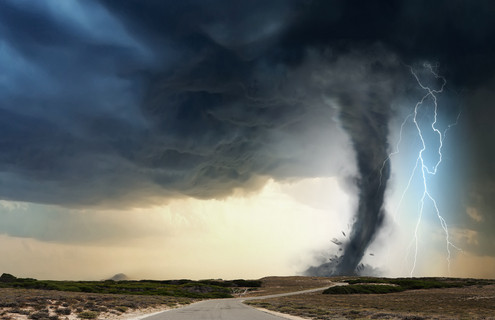Severe storms in the Northern Hemisphere led to the greatest number of February tornadoes in the US since 2008, according to Aon’s Impact Forecasting catastrophe report.
According to the report, damage resulting from tornadoes, straight-line winds and large hail was noted in the Plains, Midwest, Southeast, Mid-Atlantic and Northeast.
Virginia endured the strongest February twister on record for the state. Combined economic losses in the US, which also includes damage resulting from heavy snow and ice, are expected to top $1 billion.
Windstorms Norkys and Ruzica, known locally as Henry and Imogen, brought high winds and coastal flooding to parts of Ireland and the UK. The report suggests that total combined economic losses from both storms were estimated at $175 million.
In addition, the report revealed that the Southern Hemisphere registered its strongest tropical cyclones on record.
Tropical Cyclone Winston caused landfall on Fiji’s island Viti Levu, killing at least 44 people and damaging or destroying more than 24,000 homes.
Total economic losses were estimated at $470 million, which equals roughly 10 percent of Fiji’s GDP. Insurers noted claims were expected to reach $47 million.
Steve Bowen, associate director and meteorologist at Impact Forecasting, said: “Despite starting to show signs of weakening in the Central and Eastern Pacific Ocean, the record-tying El Niño left its fingerprint on many global natural disaster events in February.”
“From Tropical Cyclone Winston’s record intensity landfall in Fiji to flooding rains in California to the worst drought in decades across parts of Southeast Asia and Africa, it is clear that the El Niño phenomenon will continue to impact atmospheric and oceanic patterns in the months ahead.”
“These events pose a risk of further straining government disaster recovery budgets. This will only reinforce the importance of insurance and risk analysis; particularly in countries with lower insurance penetration levels.”






